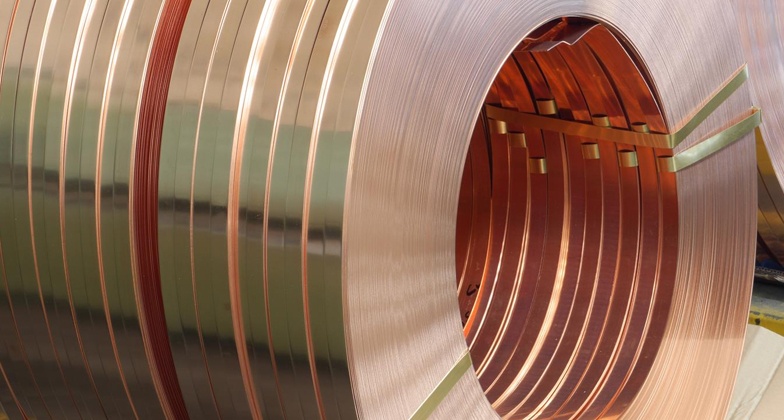
Copper Strips Manufacturing and Applications
Copper strips are flat, thin pieces of copper that are used in a variety of industrial applications. The manufacturing of copper strips involves several processes, including smelting, refining, casting, rolling, and annealing. Here is a breakdown of the copper strip manufacturing process:
Smelting: Copper ore is extracted from the ground and crushed into small pieces. The crushed ore is then melted in a furnace, and impurities are removed to obtain pure copper.
Refining: The pure copper obtained from smelting is further refined to remove any remaining impurities.
Casting: The refined copper is then cast into ingots or billets.
Rolling: The copper ingots or billets are then rolled into thin sheets or strips using a rolling mill.
Annealing: The rolled copper strips are annealed to improve their ductility and malleability. Annealing involves heating the copper strips to a high temperature and then cooling them slowly.
Copper strips have a wide range of applications in various industries, including:
Electrical Engineering: Copper strips are used in the manufacturing of electrical wires, transformers, and other electrical components due to their excellent electrical conductivity.
Roofing: Copper strips are commonly used in roofing due to their excellent corrosion resistance, durability, and aesthetic appeal.
Industrial and Manufacturing: Copper strips are used in various industrial and manufacturing applications, including heat exchangers, radiators, pipes, and fittings.
Plumbing: Copper strips are used in plumbing due to their corrosion resistance and ease of soldering. Copper pipes are commonly used for plumbing in homes and commercial buildings.
Renewable Energy: Copper strips are used in renewable energy applications such as solar panels and wind turbines due to their high thermal conductivity and excellent electrical conductivity.
Automotive Industry: Copper strips are used in various automotive components such as radiators, brake lines, and electrical wiring due to their excellent conductivity and durability.
Coinage: Copper strips are used in the manufacturing of coins due to their excellent electrical conductivity and resistance to corrosion.
In conclusion, copper strips are an essential material for various industries due to their excellent electrical and thermal conductivity, corrosion resistance, and malleability. The manufacturing process involves several steps, including smelting, refining, casting, rolling, and annealing.
